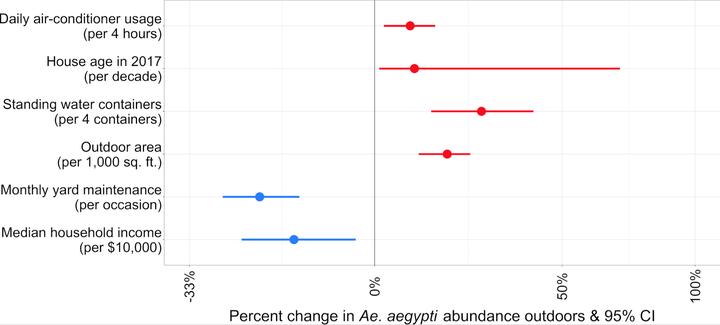Sociodemographic drivers of Aedes aegypti abundance
 Percent change in Aedes aegypti abundance associated with different household characteristics.
Percent change in Aedes aegypti abundance associated with different household characteristics.Aedes aegypti, a vector of Zika, dengue, chikungunya, and yellow fever viruses, has expanded its range in California in recent years. This species tends to thrive in low socio-economic status (SES) communities lacking adequate sanitation, and has been associated with risk of local dengue outbreaks; however, it is unclear how community infrastructure may influence the risk of local outbreaks in the U.S., where residential areas are structured differently than those in developing regions of the world where ZIKV and DENV are endemic. During the summer of 2017, I was the lead investigator on project in collaboration with the Greater Los Angeles County Vector Control District (GLACVCD), and ran a household survey of 163 households in sociodemographically diverse communities in Los Angeles County (LA), CA. I discuss my work in an interview with KCET, a local media group:
Our aim was to quantify sociodemographic disparities in the risk of local Zika and dengue outbreaks in California. Using hierarchical models, we found that a decrease in income of approximately $20,000 was associated with a 30% increase in Ae. aegypti abundance at the household level, highlighting the need for community-specific vector control programs. You can find the publication here